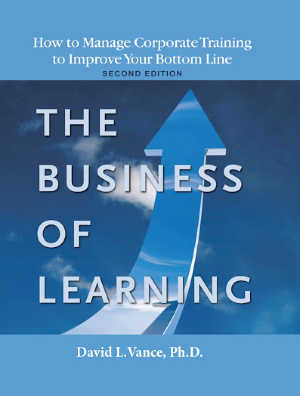Contents
Part One—Introduction to the Business of Learning
Chapter 1 Business Fundamentals for the Learning Manager
Speaking the Language of Business
Why Do Organizations Exist?
How Do Organizations Measure Their Success?
How Do Organizations Track Their Progress and Keep Score?
How About Financial Reports?
The Income Statement for a Learning Function
The Labor Rate and Fully-Burdened Labor Rate
Variable and Fixed Expenses
Conclusion
Chapter 2 The Business Case for Learning: Program Level
Why Does an Organization Invest in Learning?
The Impact of Learning
How About Nonprofits?
The Business Case for Learning
The Business Plan for Learning
Conclusion
Chapter 3 How Much Are We Spending, and Where Is It Going?
How Much Is the Organization Currently Spending on Learning?
What Is It Being Spent On?
How Many Resources Are Dedicated to Learning?
How Many Are Served by Learning?
Opportunity Costs: The Value of Participants’ Time
Conclusion
Part Two—Strategic Alignment and the Business Plan for Learning
Chapter 4 Strategic Alignment
Definition of Strategic Alignment
The Strategic Alignment Process
Strategic Alignment Results
Business Goals versus HR Goals
The Seven Myths of Strategic Alignment
How Do Competencies Fit In?
Conclusion
Chapter 5 The Business Case for Learning: Enterprise Level
Benefits and Costs for Strategically Aligned Learning
Benefits and Costs for Unaligned Learning
Other Costs
The Business Case for Learning at the Enterprise Level
What Is the Right Level of Investment?
Conclusion
Chapter 6 The Business Plan for Learning
What Is It, and Why Is It Important?
Contents of the Business Plan for Learning
Creating the Business Plan for Learning
The Importance of Specific, Measurable Goals
The Role of Plans, Estimates, and Forecasts
Conclusion
Part Three—Managing the Learning Function throughout the Year
Chapter 7 Governance
Why Have Governing Bodies?
Effective Use of Governing Bodies
Four Levels of Governing Bodies
Conclusion
Chapter 8 Measurement and Evaluation
Why Measure?
The Levels and Types of Measurement
Obstacles to Measurement
The ROI Controversy
Measurement Strategy
Calculation and Use of Net Benefits
Conclusion
Chapter 9 Disciplined Execution
Specific, Measurable Goals
Clear Roles and Responsibilities
Disciplined, Data-Driven Process
Use of Reports
Common Objections to Running Learning Like a Business
Conclusion
Part Four—The Economics of Learning: Improving Your Efficiency and Making Better Choices
Chapter 10 Program Selection, Size, and Duration
Executive Summary
Economic Theory
Application to Learning
Concept of Profit Maximization Applied to Learning
How Large Should the Program Be?
Which Programs Should Be Selected?
How Long Should a Program Be?
Conclusion
Chapter 11 Implications of Scale and Cost for Pricing, Canceling Classes, and Plan Revisions
Executive Summary
Scale and Cost
Implications for Pricing
Implications for Canceling Classes and Courses
Implications for Plan Revisions
Conclusion
Part Five—Conclusion
Chapter 12 Organizational Structure and Funding
Structure of the Learning Organization
Funding
Conclusion
Chapter 13 The Business of Learning: Pulling It All Together
Vision and Mission
Running Learning Like a Business
The Journey
Conclusion
Appendices
A Enterprise Learning Data Template
B A Sample Business Plan for Learning
C Introduction to Talent Development Reporting Principals (TDRp)
D Roles and Responsibilities
Roles and Responsibilities for the Learning & Development Department and the Sponsor (Goal Owner)
Index
About the Author


